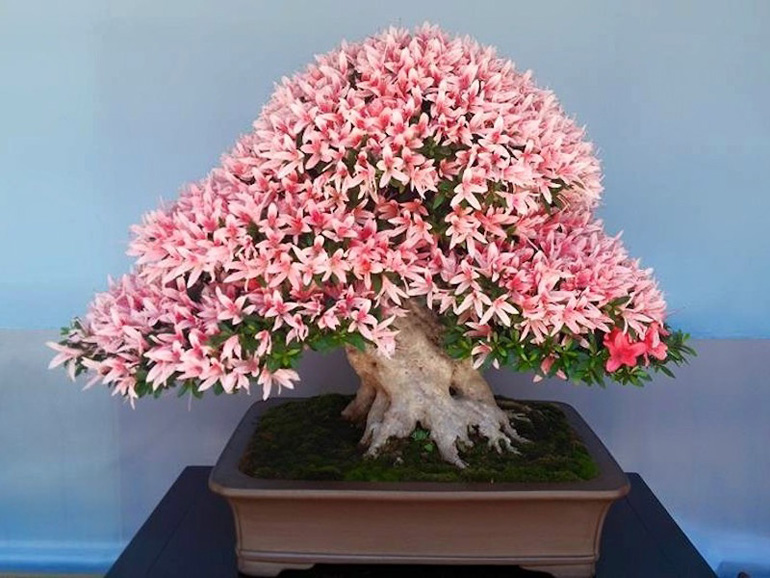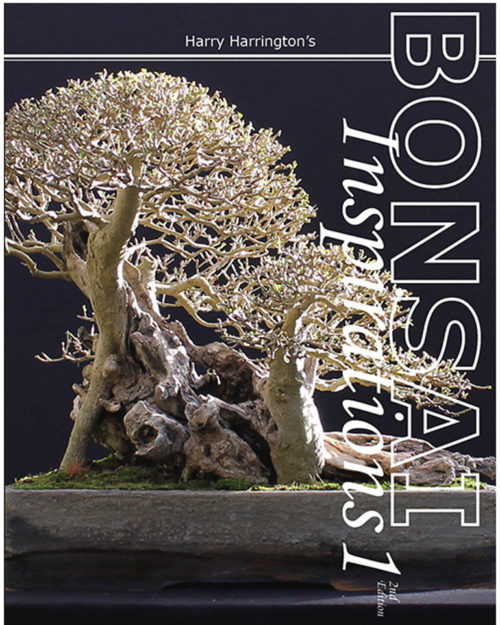This powerful old cascading Japanese Black Pine (Pinus thunbergii) is a masterful example of how energy can be directed downward in a tree that naturally wants to grow upward. The photo is from Bonsai Today Master Series; Pines.
A late start today, so it’s time for a journey into our past. This post was one of our very firsts (Feb 2009 with an added azalea photo from a later post), but like so much with bonsai, is still 100% pertinent today… and tomorrow, and so forth.
Whenever you prune, trim or pinch, you are redirecting energy. If you remove a branch the energy (primarily water, gases and nutrients) that would have flown into that branch has to go somewhere. Some of it goes to forming a callous where the branch was, the rest goes elsewhere.
Continued below…
NEW KOYO BONSAI TOOL SPECIAL
all Koyo Tools 25% to 40% off list prices
 Masters Sword Shears
Masters Sword Shears
one of over 50 different Koyo tools we offer
this special ends Nov 14th, at noon EST
Basically energy flows two ways in plants; up from the roots, and back down from the leaves. For bonsai, it’s the up from the roots that we are primarily interested in.
These illustrations give an idea, of one part, of what goes into needle reduction and energy balancing on Japanese Black Pines. It's from our Bonsai Today Master Series; Pines.
Most plants are apically dominant. This means they put most of their energy from the roots up to their apex. This is particularly true of fast growing tall trees, like redwood, spruce etc. In these giants, survival of the fittest often means survival of the tallest.
LOWEST WIRE PRICE YET
500 gram (1.1 lb) BONSAI WIRE
ONLY 7.95 PER ROLL
 this special will end November 8th at noon EST
this special will end November 8th at noon EST
Usually with bonsai, you want to move the energy down. Trimming and pinching the apex and allowing lower branches and twigs to grow unimpeded (at least for a while) is a good way to do this. For sure, there’s much more to energy balancing than just this, but it’s a start.

Azaleas are laterally dominant. This photo is from a Satsuki azalea Bonsai festival at Ueno Park in Tokyo. We borrowed it from Bonsai Empire.
Some plants, like azaleas, are laterally, rather than apically, dominant. They naturally spread rather than grow primarily upward. These types of plants often make good bonsai, provided they have other desirable traits like short internodes and small leaves.
Pines are particularly interesting when it comes to energy balancing. In addition to being apically dominant, most pines have fairly long internodes and longish needles. These present problems that any pine loving bonsai enthusiast needs to solve (unless the pines you love are already compact and have small needles).
Now on Special!
Harry Harrington’s Bonsai Inspirations 1
is now available in North America. This information rich book is divided into 14 chapters, each covering the progression and development of a bonsai over a period of many years, illustrating in great depth how impressive and majestic bonsai can be created from humble beginnings.

We just received word that Harry is airmailing us more copies
but we will still most likely run out before the Holidays
list price 34.95
SPECIAL WHILE THEY LAST, ONLY 29.95